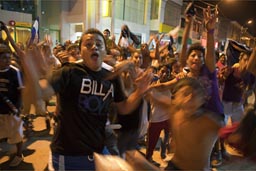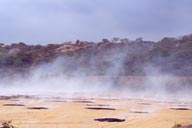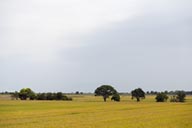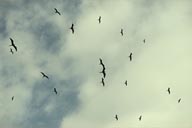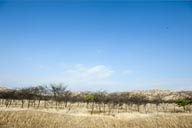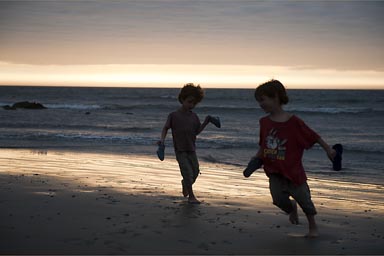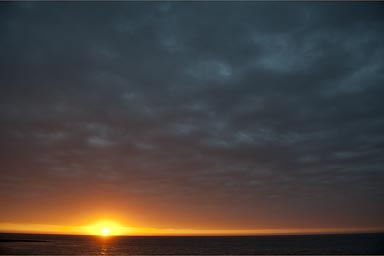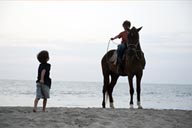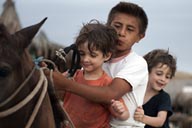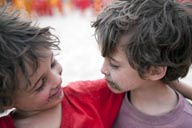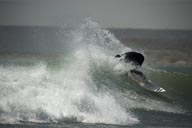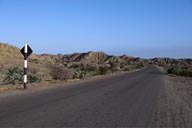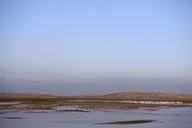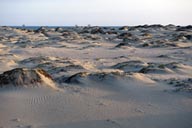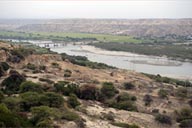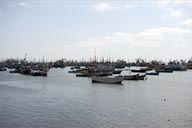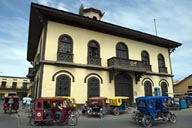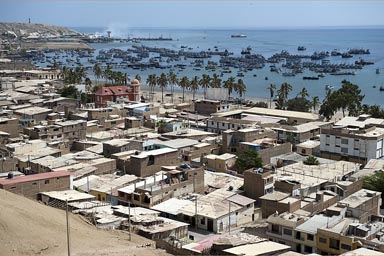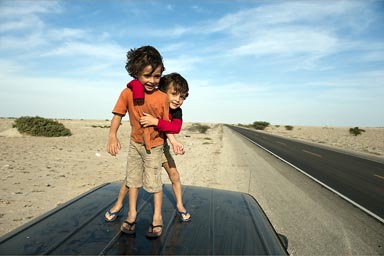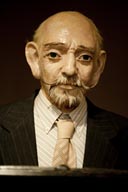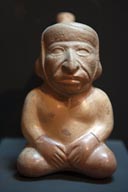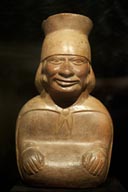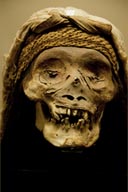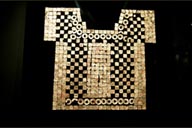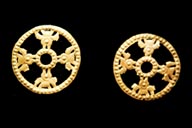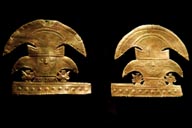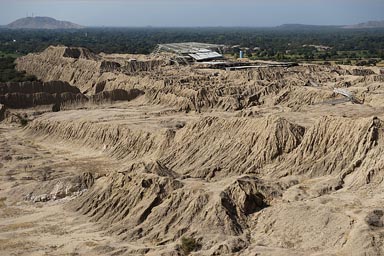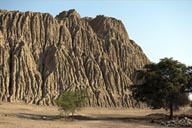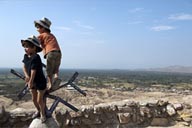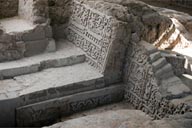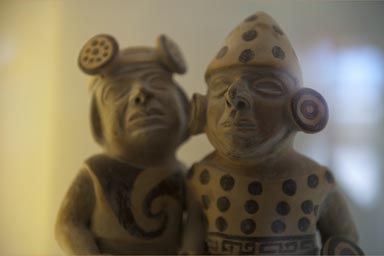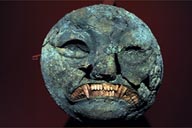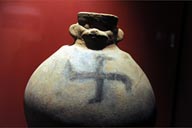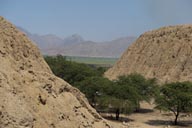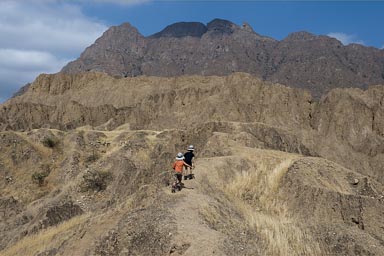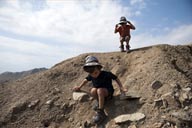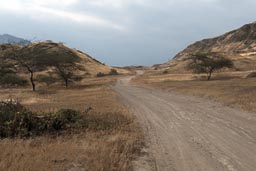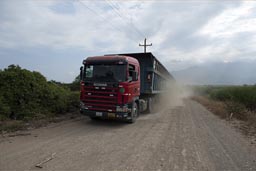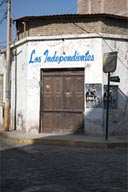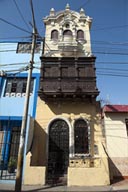www.thisfabtrek.com > journey > south-america > peru > 20120606-chiclayo
First Tumbes and then the beach in Mancora.
Download GPS (KML) track/waypoints.
Tumbes hits hard, it seems we have finally run into the rougher, more troublesome Latin America. We come after dark and a long day going back and forward between the Ecuadorian and Peruvian border posts and the aduana of the former was completely elsewhere. This is Saturday the 26th of May and at the late hour the insurance booth is closed, "Get it in Tumbes!" they tell us, and so keen to get my hands on it, as I have heard about Peruvian police, I now run straight into the tricksters' and hustlers' open arms.
I escape the knife fight or worse, theses guys maybe up to a lot, I just lose 20USD and it has not happened in 8 years that I trusted the obvious drunk thief, I literally give the money away thinking 'is only 20USD', am just too damn keen. The anger about myself settles quickly, I am prepared to take on this country. Quickly it becomes clear that there is no insurance to be had this weekend. So we stay in Tumbes, on plaza de armas, where cockroaches are everywhere, millions, it's hard to avoid stepping onto the already dead ones, I have not seen so many on a spot in all my travels.
This Saturday evening is a huge fiesta in the whole of Turbes, a drunken mess in one part of town, an overly correct, underfunded, bad sound 1st Festival de Musica Criolla on the main plaza, where the advertisement interruptions are longer and louder that the actual acts, certainly a bit distracting are the cockroaches that circle the feet, and Daniel and David my twin boys are after them.
Later we have a hard time to buy a bottle of water, nobody wants to change 100 Soles. At night Daniel has diarrhea, all night, this a reception of sorts in Peru.
Sunday we drive without insurance, and find some miles down the road Zorritos and a pool/beach bar, sick Daniel spends 6 hours in the water. Back in Tumbes while we stroll I meet my thief and he knows me, while he spends money on ice cream for his girlfriend, and I am sorry but cannot hold back and proclaim to the vendor and everybody around that it is him who tricked me, I let it be heard in bad simple Spanish: 'God is going to deal with you'. He sneaks away instead of punching me right away.
With the sound from the Criolla Festival the boys sleep in soon, while I wander about the plaza and wonder how we fare here. The other friends, Julian and Alex, and their van (those who we shared the boat and container Panama2Colombia with) were broken into right here during the day, and everything of value was stolen. Considering, we are doing quite fine apart from diarrhea. And then hell breaks lose, a football match was won by the Tumbes club, and the fans run wild in celebrations without constraint. Welcome to Peru.
Monday comes and SOAT Tumbes doesn't sell insurance for tourists, so we head back to the border, then back to Tumbes, I feed the boys and I have an early beer, then charge my phone, buy data package which for 2 more months would not fully understand how it works, then buy new hats for Daniel and David, as we lost one in Cuyabeno and one in Cuenca.
Early afternoon we are headed south, 'Lima 1,295kms' it said past the border on the pan-americana, this is a long way to go and where and how often will we take detours? Mornings at the coast are on the misty side, past rice fields on the right right, the burning of rice residuals left, skies are blue in the afternoon, some birds glide in the thermal winds of coastal dunes, the desert takes over quickly.
Later we stick our feet in hot, white sand on the most tranquil beach with the red Pacific sunsets, Mancora, the boys find friends with horses quickly while I fall in love with Cusqueña beer and ceviche, pronounced mostly cebiche and the Peruvian type is very special, has no tomatoes in it, just onions and pure fish or mixed with seafood, always with acidic lime and aji/chili, it's the lemons that 'cook' it, a great Japanese import, made a Peruvian national dish.
In Mancora we stay, because on the diarrhea front we are getting worse, after a few days we all have it, and so stay on and stay on and hope and the doctor in el centro de salud prescribes stuff against parasites and we stay even longer.
But 8 days is enough and we leave one morning with Austrian Moritz who's here for the surf and Peruvian Rosa who we became friends with, for out of the world, desert Lobitos, for an afternoon on the beach and the surf, and nice spicy ceviche.
When they return to Mancora we head on south and end up in the desert near Punta Balcones, South America's most western point and suffer from diarrhea. Out here in the Sechura it is all about oil fields and production, pumps and pipelines and we share the desert's dirt tracks with heavy machinery. We get to dusty Miramar and its windmills and palms, then cross the Chira river and along its banks, they grow cotton, sugar cane and rice.
Colan is a dusty piece of head land, its houses are built on poles, too close to the water. We hop over the cliffs to Paita and the hundreds of fishing vessels give a nice view from above, in the center then I can't pass those stands that sell fresh ceviche and it's again spicy and I like it, - for the moment my intestines accept, the boys get pure white rice.
This whole coastline down here reminds me so much of the Western Sahara which I drove down so many times. Going south, the ocean is on the right side, the sand and the dunes on the left, cliffs take turns with beaches, the villages are exposed or taken by the moving sand, poor people live in the dirt, the trash is heaped out by the back door and down the slopes, the plastic bolsas fly round and get caught in the acacia; it is true Sahel Africa, I think as we circle around the back streets of Paita.
Via Piura and Catacaos, and I think the detour is not worth it, and then I buy water ice for the boys knowing that I really shouldn't. Eventually we just keep going – south, cross more desierto Sechura, 'a desert, this we have never seen' say the boys.
Chiclayo, Lambayeque, Tucume, Sipan, Pampa Grande.
We ride into Chiclayo late, the boys are hungry and the traffic is horrible. David says to Daniel 'I search for the restaurant on my side and you on the other side', I have never heard them say this, just it takes me much longer to find a parking for the night, really late we get our hands on great fried chicken and rice, more than we can eat.
Hans Heinrich Brüning museum, Lambayeque.
So what are we up to here in Chiclayo/Lambayeque?
Well, it is time to get my head 'round Peru's pre-colonial history, because I know nothing.
We start with the fascinating Brüning museum in Lambayeque, based on the collections of the German born archaeologist (died 1928), it contains mummies, masks, ceramics, textiles and most impressive hundreds of gold pieces of art and jewelery in what is called the Golden Room. But it covers such a long period and the whole of the northern area, cultures from Mochica/Moche (100-800 AD), Chimú (followed the Moche) and Lambayeque (followed the Moche as well) to Inca (followed till Spanish conquest). But also earlier stuff and much earlier stuff, I am dazed as I walk out, but I am new to the subject.
Lord of Sipán, museum in Lambayeque.
We move some blocks down the road and find a real world wonder, the tomb of the Lord of Sipán (ca. 100 AD), and others that escaped the looting by conquistadors and others; its mummies, copper, gold and ceramic represent the most significant find in archeology since Tutankhamun, it is housed in a world class museum the Tumba Real, the best I have seen since the NY-Met. Unfortunately, no photos allowed. (wiki)
Tucume, pyramids.
We get out on the road and drive north to Tucume, which was one of the centers on civilization till ~1,500 A.D., maybe a capital, and for many hundreds of years for successive cultures. Though it has since been slowly washed into the sea, as the enormous pyramid structures of the Mochica and Chimú were built of adobe bricks instead of stone. Fascinating like the Egyptian pyramids that I have seen. (wiki)
Sipán, pyramids
Morning we drive east of Chiclayo past miles and miles of sugar cane plantations, to Sipán, the site where the famous untouched tomb was found in 1987. There is a museum too and more stuff from other tombs, confusing, many artifacts, many epochs, many cultures. (Sipan and Huaca Rajada)
Pampa Gramde.
From Sipán out to Pampa Grande again all is sugar cane fields, the road is bad, think because we took the back roads, and Pampa Grande receives no tourists, though it is by far the biggest pyramidal site here in northern Peru. In fact its origins are much older then Sipán and Tucume, subsequently Moche, Lambayeque and Chimu had their hand on it. Again it is an adobe brick structure, and many el-niño disasters caused deep ravines to the pyramid and ramps, other 'caves' though are man-made, the looting has not stopped till date. (Interesting read about the gold jaguars of Pampa Grande ponce.tv)
We park the van where we can't go on no-more, then walk up hill, and to our horror discover that the boys' boots are hardly protective against the spines and thorns of the Sechura desert.
After Pampa Grande we drive on east towards the Andes, while in the valley on dirt roads and the sugar cane trucks roll by, beautiful land, amazing Peru.
P.S.: On Toño, because Peru for us is so special because I am blessed to know Toño, a friend, and I call him once we have arrived in Tumbes, he is my guide, by phone, mail and chat. Toño and I met in Nouakchott, Mauritania, 2006, and we met one more time in Bamako, Mali, and then I kept saying for 6 years that one day I come and visit 'his' country. He is 'responsible' where I go round in Peru. "Didn't I tell you Peru is the best country in the world?" he said on many occasions, even before I arrived here. Now after more than 3 month, I believe him, it is maybe the most interesting country that I have traveled, and food is amazes me daily.
P.S.: On Chiclayo, this page is named after it, this is a nice city, 3rd or 4th largest in Peru (all cities except Lima are below 1 million), shame it does not get much coverage here, it is busy, the market area especially. Chiclayo, after the conquest, unlike other Peruvian colonial cities, was inhabited by a largely indigenous population rather than Spanish colonizers.
www.thisfabtrek.com > journey > south-america > peru > 20120606-chiclayo

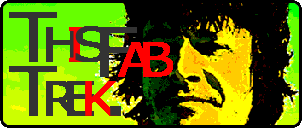
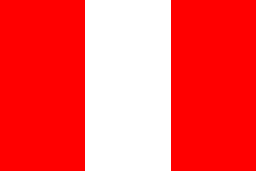
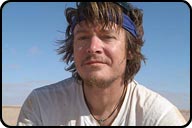
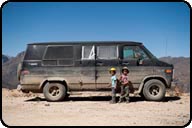
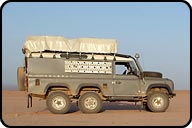

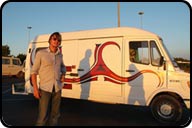
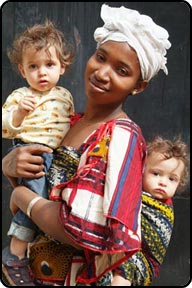
 contains Festival/Fiesta/Art photography.
contains Festival/Fiesta/Art photography.
